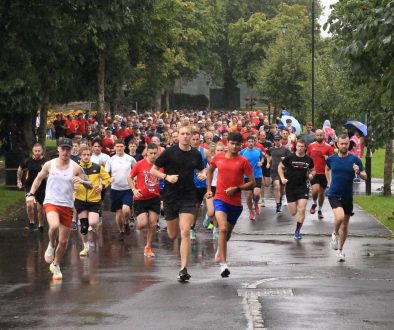The Importance of Anti-Rotational Core Exercises for Spinal Health
In the world of fitness and rehabilitation, core strength is often emphasised as a key component of overall health and well-being. However, not all core exercises are created equal. While traditional exercises like crunches and sit-ups focus on flexion and extension, anti-rotational core exercises play a crucial role in maintaining good spinal health. As an experienced chiropractor and blog writer, I am excited to delve into the significance of these exercises, and their benefits, and provide a comprehensive guide on how to incorporate them into your routine.
Understanding Anti-Rotational Core Exercises
Anti-rotational core exercises are designed to strengthen the muscles responsible for stabilising the spine and preventing unwanted rotational movements. Unlike conventional core exercises that involve movement, anti-rotational exercises emphasise resisting movement, specifically rotational forces. This type of training targets the deep core muscles, including the transverse abdominis, obliques, and multifidus, which are essential for maintaining spinal stability and alignment.
Why Anti-Rotational Core Exercises Are Important
Enhanced Core Stability
Anti-rotational exercises challenge your core muscles to work together, resisting rotational forces. This enhances stability, reducing the risk of injuries and promoting better posture during daily activities and workouts.
Functional Strength
These exercises mimic real-life scenarios, translating into improved functional strength for activities like lifting, twisting, and reaching. By training to resist movement instead of twisting or flexing at the core, you engage multiple muscle groups, enabling them to function as a cohesive unit.
Injury Prevention
A strong and stable core is a key factor in preventing injuries, especially in the lower back. Anti-rotational exercises reduce the risk of injuries by enhancing the ability of your core muscles to resist rotational forces and maintain proper alignment. By providing better support to your spine, these exercises can alleviate stress on your lower back.
Improved Posture: Maintaining good posture is essential for spinal health. Anti-rotational exercises help strengthen the muscles that support proper alignment, reducing the likelihood of developing postural imbalances and related issues.
Enhanced Athletic Performance
For athletes, core stability is crucial for optimal performance. Anti-rotational exercises improve the ability to generate power and maintain control during dynamic movements, such as swinging a bat, throwing a ball, or performing a golf swing.
Effective Anti-Rotational Core Exercises
Here are some effective anti-rotational core exercises that can help improve your core strength and stability:
Pallof Press
How to Do It: Attach a resistance band to a sturdy anchor at chest height. Stand perpendicular to the anchor, holding the band with both hands. Step away from the anchor to create tension in the band. With your feet shoulder-width apart and knees slightly bent, press the band straight out in front of you, resisting the rotational pull. Hold for a few seconds, then return to the starting position.
Benefits: This exercise targets the transverse abdominis and obliques, enhancing core stability and strength.
Anti-Rotation Plank
How to Do It: Start in a plank position with your forearms on the ground and your body in a straight line. Lift one arm off the ground and extend it out in front of you, resisting the urge to rotate your hips. Hold for a few seconds, then switch arms.
Benefits: This exercise engages the entire core, promoting stability and preventing rotational movement.
Cable Anti-Rotation Chop
How to Do It: Attach a cable to a high pulley. Stand perpendicular to the cable machine, holding the handle with both hands. Pull the cable down and across your body, resisting the rotational force. Return to the starting position and repeat on the other side.
Benefits: This exercise targets the obliques and transverse abdominis, improving core strength and stability.
Dead Bug
How to Do It: Lie on your back with your arms extended towards the ceiling and your knees bent at 90 degrees. Slowly lower one arm and the opposite leg towards the ground, keeping your lower back pressed into the floor. Return to the starting position and repeat on the other side.
Benefits: This exercise engages the deep core muscles, promoting stability and preventing rotational movement.
Single-Arm Farmer’s Carry
How to Do It: Hold a heavy dumbbell or kettlebell in one hand and walk a set distance, keeping your torso upright and resisting the urge to lean to one side. Switch hands and repeat.
Benefits: This exercise challenges your core to maintain stability while carrying an uneven load, enhancing overall core strength.
Incorporating Anti-Rotational Exercises into Your Routine
To maximise the benefits of anti-rotational core exercises, consider the following tips:
Start Slow
If you are new to anti-rotational exercises, start with lighter resistance and shorter durations. Gradually increase the intensity and duration as your core strength improves.
Focus on Form
Proper form is crucial for preventing injuries and maximising the effectiveness of these exercises. Pay attention to your posture and alignment, and avoid compensatory movements.
Consistency is Key
Incorporate anti-rotational exercises into your regular workout routine. Aim for at least two to three sessions per week to see significant improvements in core strength and stability.
Combine with Other Core Exercises
While anti-rotational exercises are essential, it’s important to have a well-rounded core training program. Combine them with other core exercises, such as planks, leg raises, and rotational movements, to achieve comprehensive core strength.
Conclusion
Anti-rotational core exercises are a vital component of maintaining good spinal health and overall well-being. By enhancing core stability, preventing injuries, and improving functional strength, these exercises offer numerous benefits for individuals of all fitness levels. Incorporate the exercises mentioned above into your routine, and you’ll be on your way to a stronger, more stable core and a healthier spine.
Remember, consistency and proper form are key to reaping the full benefits of anti-rotational core exercises. Whether you’re an athlete looking to enhance performance or someone seeking to improve posture and prevent injuries, these exercises can make a significant difference in your overall health and fitness journey.
If you have any questions or would like more help with back issues. Give the clinic a call on 01242 254000. We offer free 15 minute phone calls to people who would like to see if we can help.
I hope you find this blog informative and helpful! If you have any questions or need further assistance, feel free to ask. Happy training!

